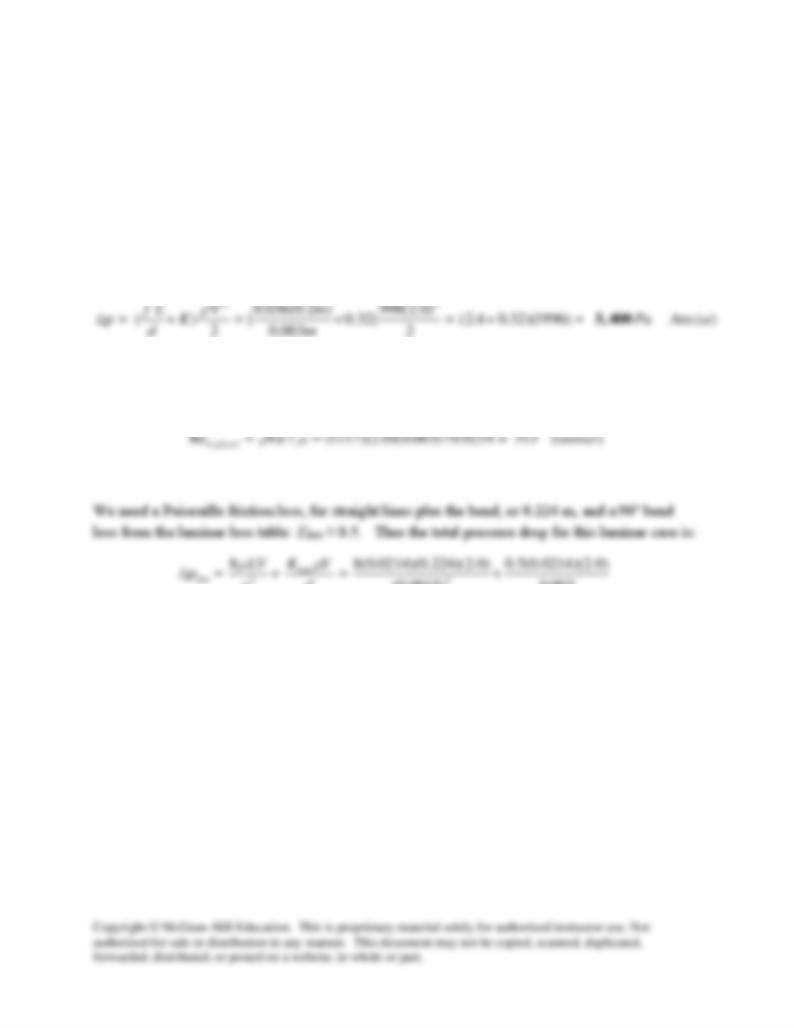
Solution 6.104
(a) For water, take ρ = 998 kg/m3, and μ = 0.0010 kg/m·s. Compute the Reynolds number:
,turbulentRe / (998)(2.0)(0.003) / 0.0010 6,000 ( )
d water Vd
= =
We can use Eq. (6.38) for the straight runs and Fig. 6.20 for the bend loss, which includes
ordinary friction around the bend. A long radius is about R/r = 10, for which Kturb = 0.32. The
friction factor, from Eq. (6.38) at a Reynolds number of 6,000, is f ≈ 0.036. Then the total
pressure drop is
2 0.003 2
(b) For ethylene glycol, take ρ = 1117 kg/m3, and μ = 0.0214 kg/m·s. Compute the Reynolds
number:
(0.0015) 0.003
34,100 7 .( )
Pa Ans b
= + 34,000
Note that the laminar bend loss is negligible, but the friction loss in the bend is nearly 4000 Pa.